Artists from Iraq combat environmental damage and climate change with paint and brushes
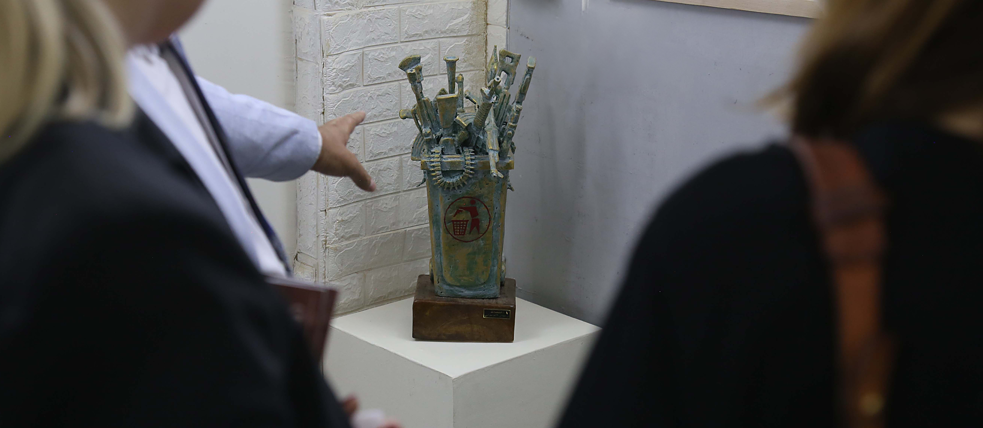
Dozens of artworks decorate the walls of the Iraqi Plastic Artists Society in Babylon and address current environmental issues within Iraqi society. They are the work of 14 artists and were created as part of Guan Eden, a project by the Goethe-Institut Irak, funded by the German Federal Foreign Office. The aim of the project is to raise social awareness of climate change and its consequences for the environment.
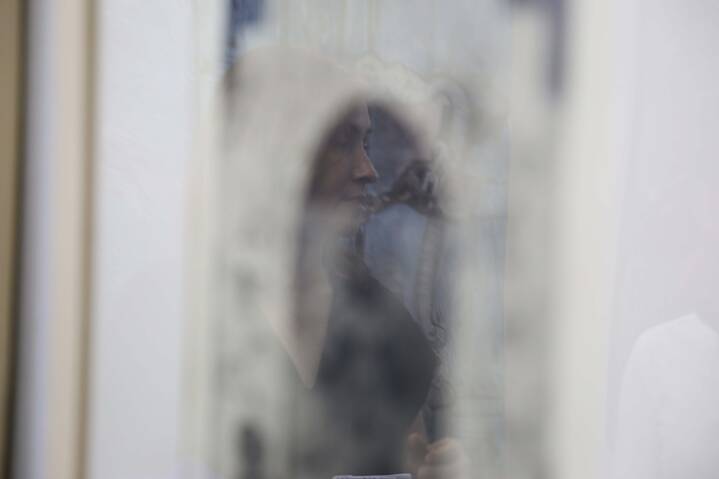
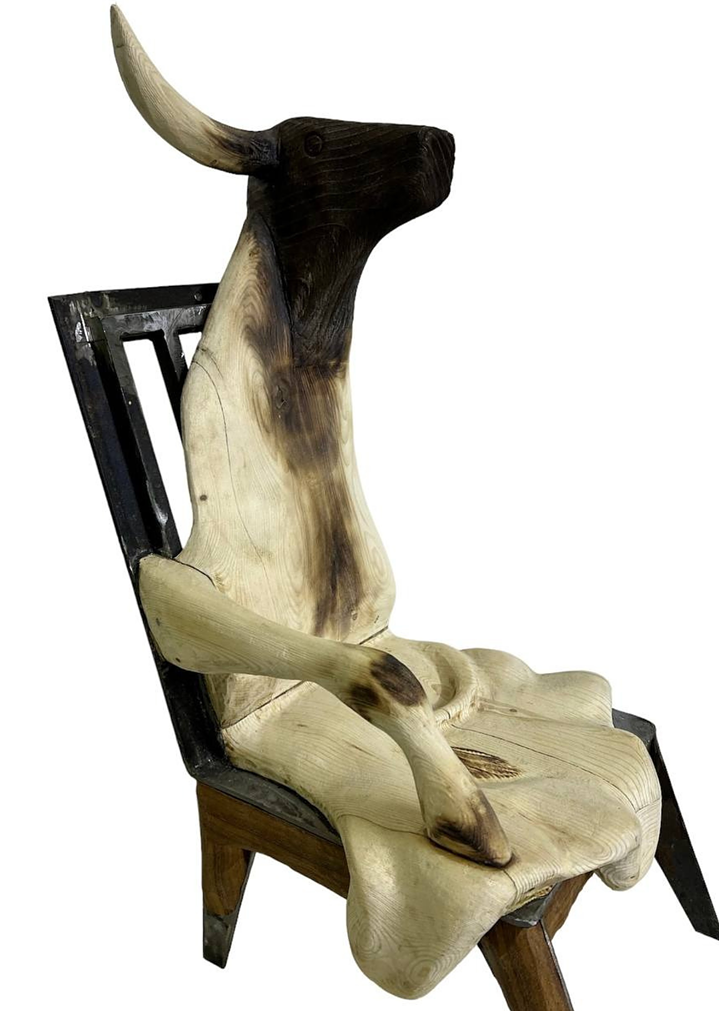
The harp of drouth
The harp of the Mesopotamian swamps leans against one of the walls. In its place between the paintings, it tells a story of drought. The artist has used a buffalo carcass or skeleton as an image to depict a true story: the story of a buffalo breeder who loses his only buffalo to drought in the Mesopotamian swamps. The man uses the skeleton of the buffalo to build a harp to express his connection with the earth. With this contemporary story, the artist alludes to the golden harps of Ur from the 4500-year-old Sumerian culture. Three stringed instruments were found during excavations in the 20th century in the cemetery of the former city of Ur in southern Iraq. The finds, which are considered to be the oldest ancient finds, are now on display in museums in Iraq, Great Britain, and the USA.
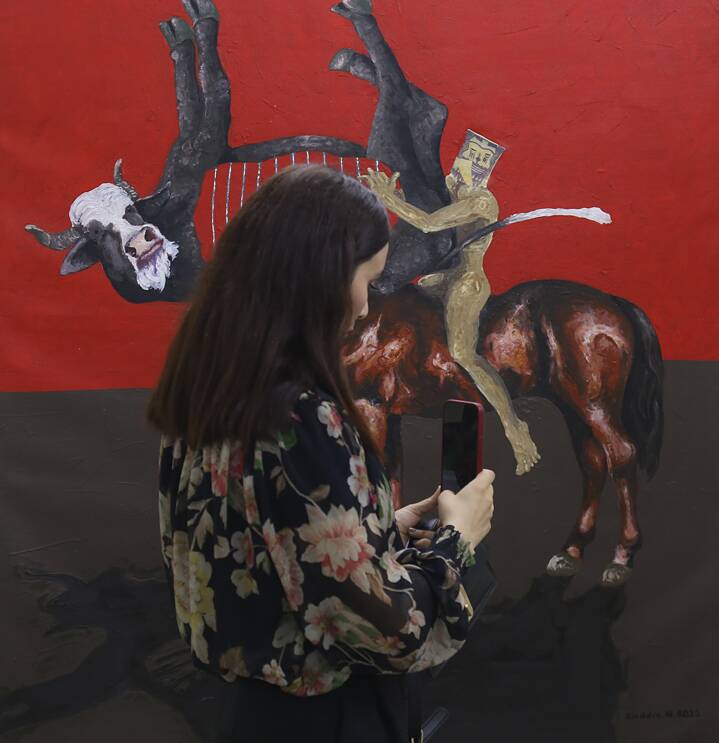
To mark World Day to Combat Desertification and Drought on June 17, the United Nations published a report in June 2022. In this report, they call on organisations towards an increased effort to protect Iraq from the devastating effects of climate change and to provide more support to the country in tackling the challenges. Iraq is suffering from long heatwaves, a decreasing average rainfall, the loss of fertile soil, soil salinisation and an increased frequency of sandstorms.
The exhibition in Hilla picks up on the report and takes up the topic, which is relevant to the society, in an artistic way.
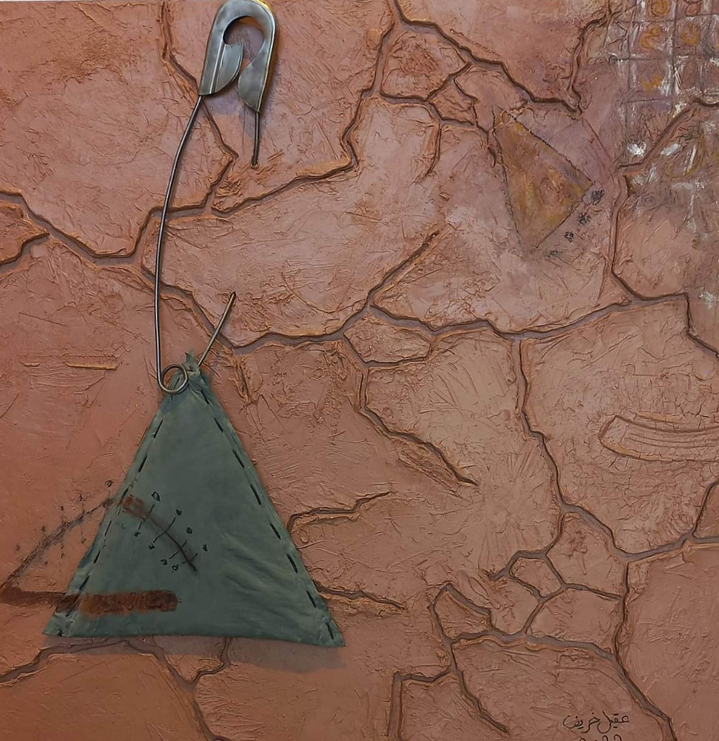
He continues: "The key elements of all the works are the environment and the climate." A wide range of topics were covered: increasing temperatures, lack of precipitation and the respectively resulting droughts with associated consequences such as soil cracking, soil erosion and desertification, as well as purely man-made problems such as the conversion of agricultural land for residential areas or the consequences of wars on people. Some works struck a more positive note and expressed a desire to transform nature into aesthetically pleasing green spaces.
Zubaidi continues: "The artworks trigger an emotional response in visitors, just as words, news, novels, stories and films can. By communicating the content, the artworks contribute to raising people's awareness of environmental issues."
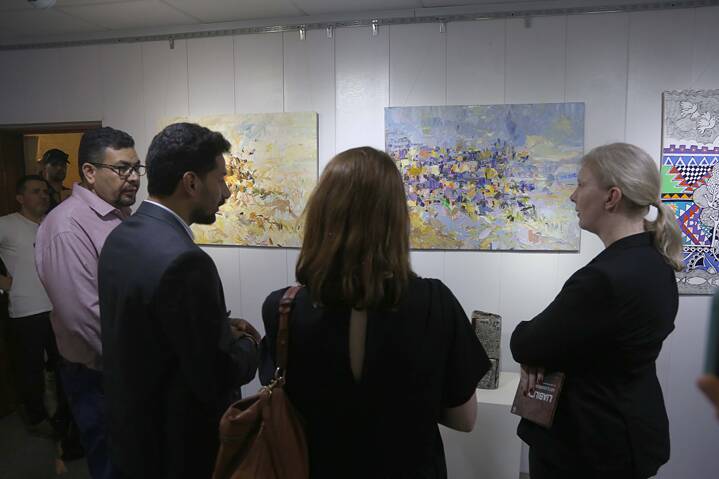
Art will endure
For Zubaidi, art and the environment are directly connected, which is expressed, among other things, through colours and their symbolism: as the origin of all colours, a change in nature due to environmental and climatic changes also has an effect on the world of colour and its use. In many artworks, water is no longer blue, but black, while colours such as brown represent drought, and yellow, red and violet represent heat.Despite the numerous wars and the destruction that Iraq has experienced for over 40 years, Zubaidi expresses confidently: "Art remains alive and continues to develop as long as there is enough to live on, electricity and water [...]. Our job is to paint, to create art and to share it with the society. The weapons of artists are canvas and paint, and it is their duty to draw people's attention to environmental problems in order to overcome them."
Dr. Haydar Ruuf Said, lecturer in Ceramics at the Faculty of Fine Arts and deputy chairman of the Iraqi Plastic Artists Society in Babylon, is exhibiting several works of plastic art in Hilla. He also believes that art could educate people about the importance of the environment and warn them how dangerous it is to ignore climate change. He adds: "We live in an environment whose health is under threat and which is no longer really suitable for human coexistence and can become a threat to people. With the help of art, we can encourage people to keep the environment clean so that we can live happily. This also includes future generations."

The land of the Euphrates and Tigris is thirsty for water
The country, which has been one of the most fertile regions on earth for thousands of years and had already developed sophisticated canal and irrigation systems under early rulers such as Nebuchadnezzar, is experiencing one of the worst droughts in decades.The marshland where the Euphrates and Tigris rivers meet, which is a UNESCO World Heritage Site, is in danger of drying out: increasing temperatures and a lack of rainfall are leading to further decreasing water levels. On top of that, the remaining water is heavily polluted with toxins due to wastewater discharges and agricultural residues, and the increased evaporation rate has caused the salt content of the water to rise sharply.
The artist Aqeel Khareef from Baghdad confirms the remarks of his two colleagues: "Art bears responsibility. The exhibited artworks contribute to dealing with the environmental problems facing Iraq. Art has an influence on politics in Iraq because problems are visualised and dealt with in a contemporary manner. In this way, art encourages the public to persuade decision-makers to address the risks of neglecting environmental problems. This helps to raise everyone's awareness so that we can mitigate the dangers of climate change."
He concludes: "It's really important that artists can engage with climate change in their region and exhibit work that addresses local issues in the future."